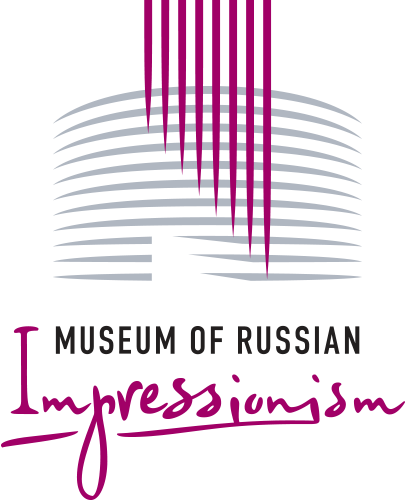LES FAUVES RUSSES
18 June - 28 September
From 18 June to 28 September the Museum of Russian Impressionism, in collaboration with the Pushkin State Museum of Fine Arts, will present the ‘wild’ Fauvist works of European and Russian artists from the early 20th century. The exhibition ‘Les Fauves Russes’, the title of which refers to David Burliuk’s article for the almanac ‘Der Blaue Reiter’, will bring together works by the French Fauvists Henri Matisse, Othon Friesz and Albert Marquet, and the rebel experimenters who used colour to change the face of Russian art in the 1900s and 1910s: Ilya Mashkov, Natalia Goncharova, Olga Rozanova, and others. The exhibition is part of a programme by the Cherry Forest Open Arts Festival.
‘Wild’ (from the French ‘fauve’) is how the critic Louis Vauxcelles described participants in the Paris Autumn Salon of 1905 who defied classical tradition and shocked the public with their crude forms, their disregard for the laws of perspective, and most importantly, their bold colours that ‘literally exploded with light’. Fauvism, an exclusively French phenomenon, put the artist’s subjective view, capable of transforming reality, first and foremost. Partly intuitively and partly intentionally, the creative searches of Russian avantgarde artists coincided with the ideas of European painters whose works they saw on their travels or at exhibitions and salons, as well as in the legendary collections of Sergei Shchukin and Ivan Morozov.
The curators of the exhibition — Ilya Doronchenkov from the Pushkin State Museum of Fine Arts, Yulia Petrova and Vera Ryabinina from the Museum of Russian Impressionism — have collected the ‘wildest’ experiments with palette, form and pictorial plane, demonstrating how, in their different ways, symbolists, Cezannists and neo-primitivists in Russia interpreted the ideas of the European avant-garde: both the discoveries of the French Fauvists, and of German Expressionists from the groups Die Brücke and Der Blaue Reiter.
The epigraph to this exhibition will be the work of graffiti artist Jean-Michel Basquiat, from the collection of the State Russian Museum. The only canvas in Russia by the American Neo-Expressionist of the 1980s will help today’s visitor to feel the same shock that viewers of the Autumn Salon experienced more than 100 years ago.
French criticism of the 1900s proposed that the ‘Fauves’ be confined in a cage — in the summer exhibition this image will materialise in the centre of the museum hall. The ‘Cage for the Wild’ will feature works by Louis Valtat and Henri Le Fauconnier, as well as ‘Drying the Sails’ by Andre Derain, which participated in the Autumn Salon of 1905, and ‘L’Espagnole’ by Henri Matisse, which will leave the permanent exhibition of the Pushkin State Museum of Fine Arts for the first time after tours to Paris and St. Petersburg. Further sections of the exhibition will be dedicated to Russian art: ‘Wild Impressionism’, ‘Wild Symbolism’ and ‘Primitivism’. Visitors will see how interest in colour captured the symbolists Pavel Kuznetsov and Martiros Saryan, as well as self-described impressionists David Burliuk and Nikolai Kulbin. Special attention will be paid to participants in the ‘Jack of Diamonds’ exhibition — the neo-primitivists Mikhail Larionov and Natalia Goncharova, along with Cezannists Ilya Mashkov and Pyotr Konchalovsky, who drew inspiration from icon painting and folk art, while also turning to traditions of the East. A separate section, ‘Les Russes de Paris’, will assemble works by Marc Chagall, Nikolai Tarkhov and Nathan Altman, who became acquainted with the new painting in close proximity to the Fauvists, in the French capital.
The exhibition will showcase 113 works provided by 51 private and museum collections from all over Russia, including the State Hermitage, the State Tretyakov Gallery, the State Russian Museum, the Far Eastern Art Museum, the Vasnetsov Brothers Art Museum, Nizhny Novgorod State Art Museum, Serpukhov Historical and Art Museum and the Rostov Kremlin State Museum-Reserve. Among the authors represented are both famous names and others little-known to the general public, such as Iosif Shkolnik, Zoya Matveeva-Mostova, Boris Tsarnakh, Illarion Skuie, etc.
Blind and visually impaired visitors can explore the exhibition both independently and on free guided tours with audio description. A more detailed idea of four paintings will be offered by tactile stations created jointly with the partner of the inclusive programme, the Art, Science and Sport Charity Foundation, as part of the Special View support programme for those with visual impairment. Fragrances based on the paintings by olfactory artist Anna Kabirova will also help to form impressions of the paintings. After the exhibition the stations will be provided for visitors to other museums.
A catalogue of the exhibition will be available in the Serovin and Korov museum shop. The collected materials will allow us to learn more about Fauvism and its influence on the Russian artistic environment: art critic Natalia Kortunova will describe the artistic movements that shaped the appearance of European modernism, and curators Ilya Doronchenkov and Vera Ryabinina will discuss Fauvist art in France and Russia. The album section will be supplemented by biographical information about the artists.
Curators of the exhibition:
• Ilya Doronchenkov — Deputy Director for Research at the Pushkin State Museum of Fine Arts, PhD in Art History, Professor of the School of Arts and Cultural Heritage at the European University in St. Petersburg;
• Yulia Petrova — Director of the Museum of Russian Impressionism, PhD in Art History;
• Vera Ryabinina — Specialist in the Exhibition Department of the Museum of Russian Impressionism.
On the museum’s 3rd floor contemporary artists will continue the conversation about ‘Les Fauves Russes’ of the early 20th century. The art space will show how the ideas and techniques of French Fauvism and Post-Impressionism assume new significance in the 21st century.



